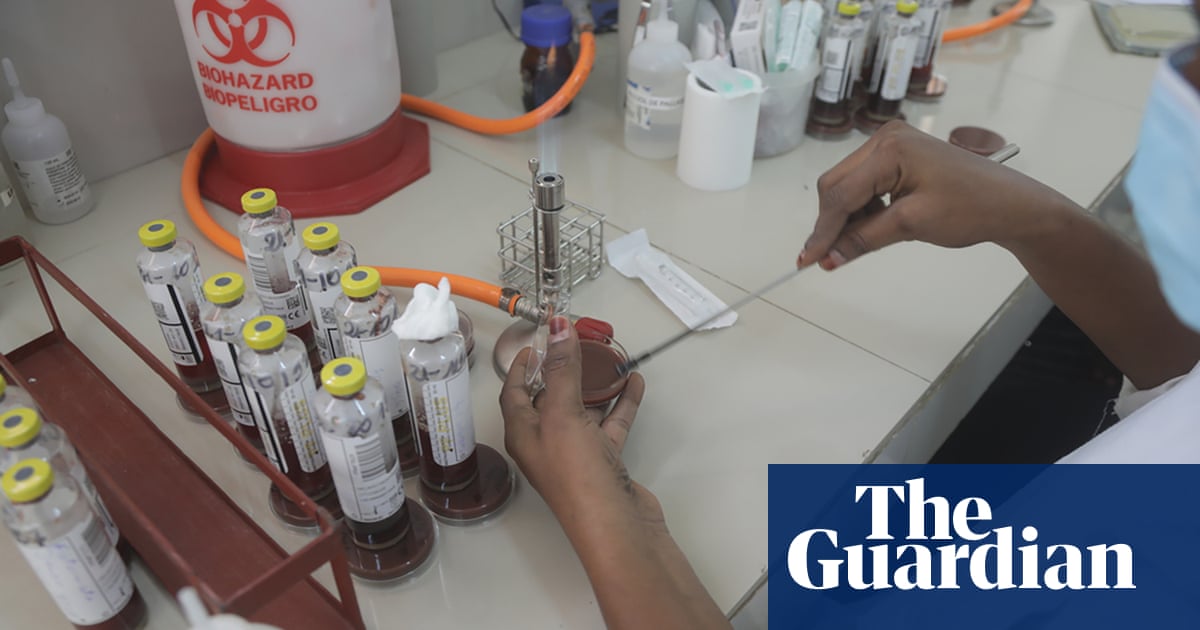Less than 7% of people with severe drug-resistant infections in poorer countries get the antibiotics they need, a new study suggests, with researchers warning that not only is this causing suffering and deaths, but is also likely to be driving antimicrobial resistance (AMR).
With AMRforecast to cause 1.9m deaths a yearby 2050, they are calling for urgent action, akin to the fight earlier this century to get HIV drugs to Africa’s virus hotspots.
“The stark reality is that most people with highly drug-resistant infections are not getting access to the antibiotics they need,” said Dr Jennifer Cohn, a senior author of the study.
AMR is a process whereby bacteria and other pathogens evolve resistance to treatments typically used against them. One driver is the overuse of antibiotics, with greater exposure to drugs offering bacteria more chances to learn how to evade them.
But a focus on overuse has meant access has been neglected, the experts warn.
Thestudy, published in the Lancet Infectious Diseases, is the first to quantify the treatment gap in low- and middle-income countries. It was led by the Global Antibiotic Research and Development Partnership (GardP).
Researchers focused on Bangladesh, Brazil, Egypt, India, Kenya, Mexico, Pakistan and South Africa, and used modelling data on the number of cases of carbapenem-resistant Gram-negative (CRGN) infections, which are drug-resistant and on the rise. They then looked at sales data for eight types of antibiotic that could be used as treatment.
Across the eight countries, there were an estimated 1.5m CRGN infections and almost 480,000 deaths in 2019. Just under 104,000 courses of antibiotics active against CRGNs were procured.
Appropriate antibiotics were available in only 6.9% of cases on average – ranging from 0.2% in Kenya to 14.9% in Mexico and Egypt.
Cohn, GardP’s global access director, said it was a pattern likely to be repeated in other poorer nations.
The infections in the study included pneumonias, bloodstream infections and complicated urinary tract infections.
The “No 1 thing” the lack of drugs did was to drive morbidity and mortality, Cohn stressed, but it could also drive AMR. Trying other, ineffective antibiotics, was likely to mean a longer duration of antibiotic use –linked in studiesto increases in resistant bacteria. Killing drug-resistant bacteria with the correct treatment would stop them spreading.
There were many factors behind the treatment gap, she said. Sick people may not make it to a hospital for diagnosis, or those who do may not be able to afford treatments.
“We are focusing introduction of newer antibiotics in the US and in a few countries in Europe. That’s not where the burden is,” she said.
“We are really trying to change the narrative to say we can’t just focus on stewardship, surveillance and containment in low- and middle-income communities, while we’re focused on just innovation in high-income countries. We actually have to focus on both all at once, in all places.”
Sign up toGlobal Dispatch
Get a different world view with a roundup of the best news, features and pictures, curated by our global development team
after newsletter promotion
Mechanisms that worked well for HIV could be applied for AMR, Cohn said. GardP is working with the pharmaceutical company Shionogi to use voluntary licensing (allowing generic drugs to be manufactured) to speed up globalaccess to cefiderocol, which can treat some resistant infections.
The research team called for treatment targets like the “care cascade” set by HIV global policymakers aiming for at least 95% of people with HIV to be diagnosed, 95% of people with HIV to be on antiretroviral treatment and 95% of those to have the virus under control by 2030.
Cohn said she had been surprised to hear views about “the inability of certain countries to actually be able to use [antibiotics] appropriately”.
“I just don’t think that’s true,” she said. Even in well-resourced healthcare systems it could be hard to diagnose and treat bacterial infections. “Access is important everywhere. No matter how you slice it, there is a big access gap.”
Prof Alison Holmes of the University of Liverpool, who leads the global Centres for Antimicrobial Optimisation Network, said the study “should prompt immediate action”.
She said: “If these critical gaps in access and care are not urgently addressed, the burden of antimicrobial resistance will continue to rise, leading to more preventable deaths, worsening patient outcomes and an already devastating global health crisis becoming even more inequitable.”
